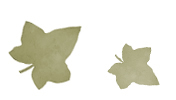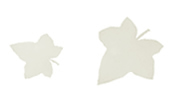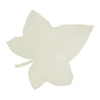


|
The
Rose is one of the most well-known and widely loved
flowers and is easily recognised by its smooth stems
with sharp thorns, serrated leaves and fragrant
flowers of deep pink and red with scarlet pips.
The Red Rose has been cultivated for well over 3,000
years and is probably the first flower from which
essential oil was distilled - it is the 10th Century
Persian alchemist, phsyician, poet, astronomer and
mathematician Avicenna who is generally accredited
with this discovery. A huge quantity of Rose petals
are required to extract the tiniest amount of oil
- making Rose an expensive oil. The principle varieties
used for producing the essential oil is Rosa centifolia
and Rosa damascena. The
flower of the Gallic Rose used to adorn the shields
of Persian Warriors several thousand years BC. The
6th Century Greek poet Sappho called the Rose the
"Queen of flowers" and in Greek and Roman
mythology the Red Rose represents desire and passion,
rebirth and protection. The first red roses were
supposed to have sprung from the blood of Adonis,
and Pink Roses when Aphrodite spilt drops of her
blood onto a white rose whilst trying to help her
wounded lover, Adonis. In
skincare Roses are suitable for all types of skin,
but especially sensitive, dry or ageing skins and
has a tonic, astringent effect on capillaries. It
is particularly effective when depression or emotional
disturbances are the cause of skin complaints. Rosewater (or a simpler 10 minute infusion of Red Rose petals) is a traditional remedy for soothing inflamed or irritated eyelids. An infusion of Red Rose petals also makes a particularly effective mouthwash and is reputed to cleanse and strengthen the gums and mucous membranes. A handful or two of Red Rose petals in the bath makes a fragrant and effective remedy for rheumatic aches and pains - fresh petals can be scattered directly into the water, alternatively place a handful of dried petals in a tea pot (or suitable vessel) and pour on freshly boiled water. leave to infuse for 15 - 30 minutes and add to the bath water. Red Roses have a long standing reputation as an aphrodisiac and in Italy it is tradition to scatter the petals over bridal beds. Interestingly Rose is considered an excellent remedy for lack of sexual confidence and is used to remedy frigidity in women and male impotence - making it an ideal oil to use in a sensual massage blend. Roses have been used in beauty treatments for thousands of years and have also enjoyed a long history of use as a strewing herb and a pot-pourri ingredient and have even appeared in herbal tobaccos. The Petals were popular as a sweet - I remember making crystallised Rose petals as a young child, dipping the clean petals in egg white beore coating them in sugar and leaving them to dry on a wire rack. These make beautiful edible cake decorations too. An
aromatic toilet vinegar recipe from A Modern Herbal
by Mrs. M Grieve, 1931 : |
|

Gaia's Garden Library
Non Fiction Section : Gaia's Garden Herblore | Susun S. Weed Articles | Articles and Musings
Fiction Section : Short Stories & Prose| As Told
By Cat | Public Domain Texts| Poetry
Shop | Library | Gallery | Forum | Contact | Links








